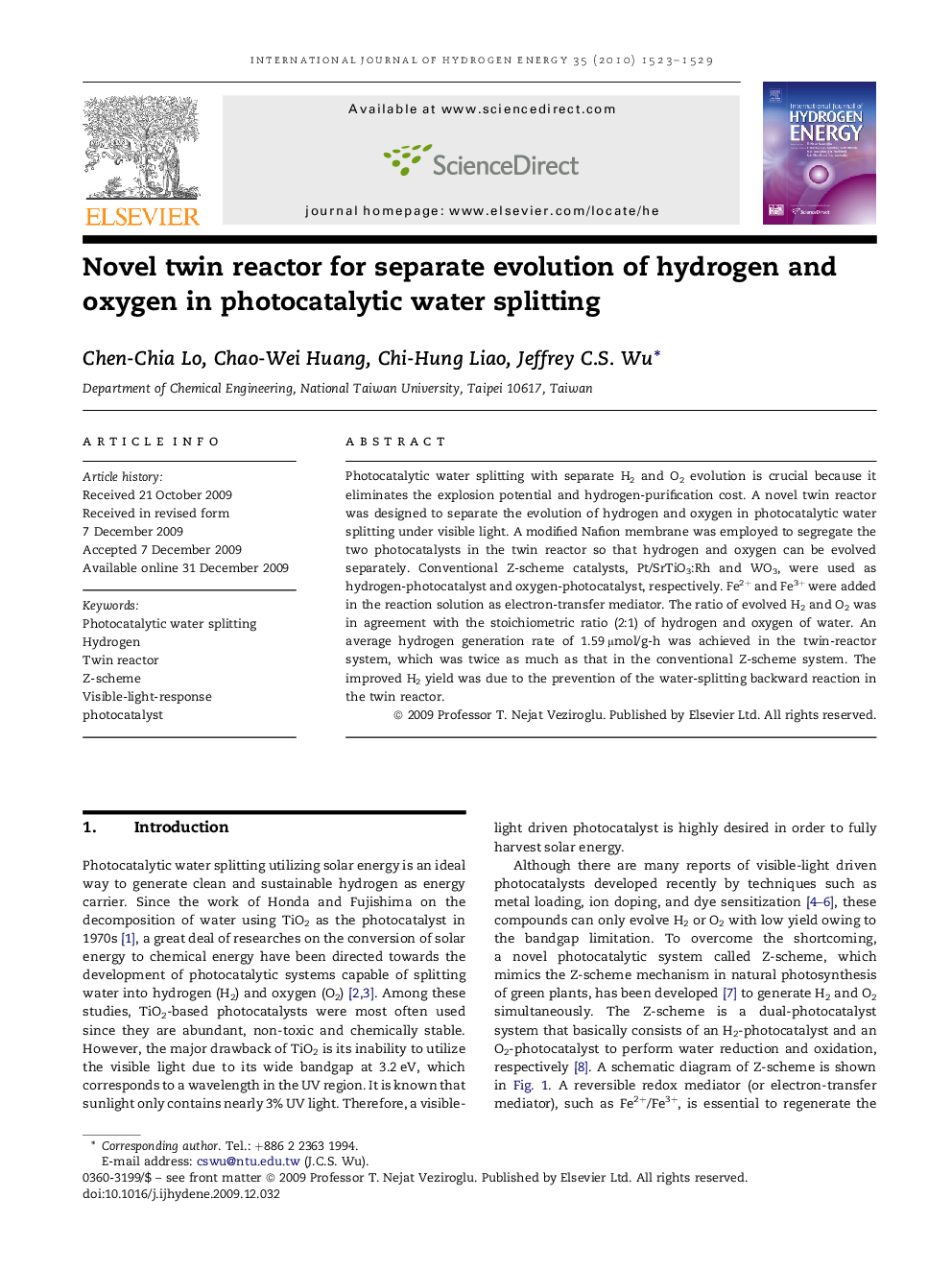| Article ID | Journal | Published Year | Pages | File Type |
|---|---|---|---|---|
| 1273366 | International Journal of Hydrogen Energy | 2010 | 7 Pages |
Photocatalytic water splitting with separate H2 and O2 evolution is crucial because it eliminates the explosion potential and hydrogen-purification cost. A novel twin reactor was designed to separate the evolution of hydrogen and oxygen in photocatalytic water splitting under visible light. A modified Nafion membrane was employed to segregate the two photocatalysts in the twin reactor so that hydrogen and oxygen can be evolved separately. Conventional Z-scheme catalysts, Pt/SrTiO3:Rh and WO3, were used as hydrogen-photocatalyst and oxygen-photocatalyst, respectively. Fe2+ and Fe3+ were added in the reaction solution as electron-transfer mediator. The ratio of evolved H2 and O2 was in agreement with the stoichiometric ratio (2:1) of hydrogen and oxygen of water. An average hydrogen generation rate of 1.59 μmol/g-h was achieved in the twin-reactor system, which was twice as much as that in the conventional Z-scheme system. The improved H2 yield was due to the prevention of the water-splitting backward reaction in the twin reactor.
